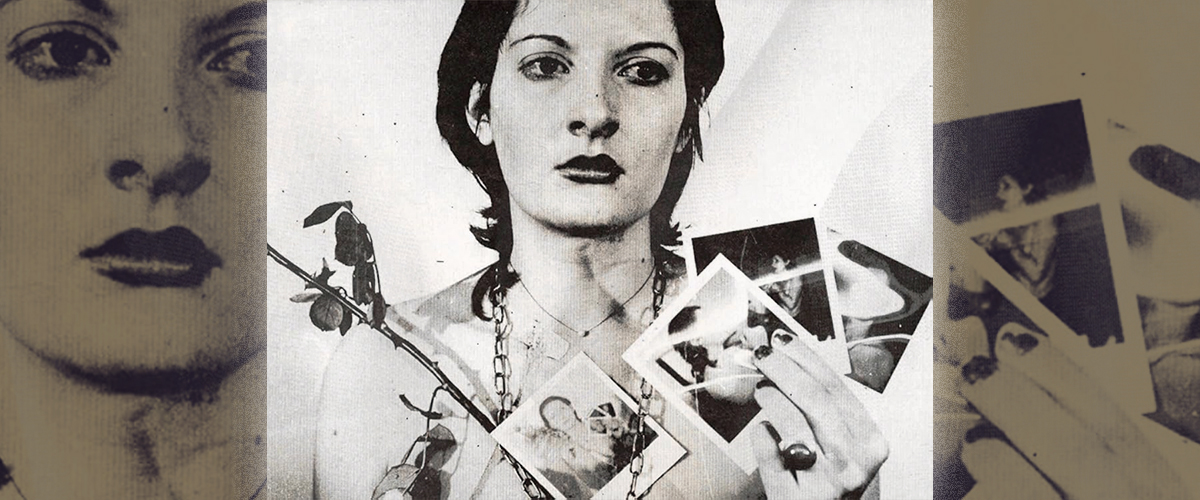“I am an object; you can do whatever you want with me,” Marina Abramović instructed the public before diving into one of the most controversial performances in art history.
The year was 1974.
Marina Abramović, a performance artist, was in the midst of Rhythm 0, a daring piece from her Rhythms series that explored the complex concept of control. Born in Yugoslavia to strict, high-ranking parents in an authoritarian socialist regime, Abramović’s work deeply interrogated the dynamics of power and control.
Her earlier pieces, such as Rhythm 10, Rhythm 5, and Rhythm 2, pushed the boundaries of endurance, pain, and the body’s relationship to art. While each was profound in its own right, it was Rhythm 0—the performance she was currently working on—that would leave a lasting mark on art history.
For this performance, Abramović placed 72 objects on a vast table. Some of these were common— a rose, a mirror, a lipstick, a comb. But others were more sinister— chains, bullets, an axe, a saw, and a gun.
The performance goal was to strip away any barriers between the artist and the spectator. Abramović wanted to examine how power dynamics play out when the artist gives up all control.
There were no distinct stages; the artist and the visitors occupied the same space, emphasizing that the audience was an integral part of the performance. She invited them to use any of the objects on the table however they wished.
In short, Abramović wanted to see how far the public would go: “I am the object.”
At first, the audience took it easy on the passive artist.
“It began tamely. Someone turned her around. Someone thrust her arms into the air. Someone touched her somewhat intimately,” said Thomas McEvilley, an American art critic present during the performance.
But as time went on and people began to confirm Abramović’s passivity, they turned more and more violent.
“In the third hour all her clothes were cut from her with razor sharp blades. In the fourth hour the same blades began to explore her skin. Her throat was slashed so someone could suck her blood. Various minor sexual assaults were carried out on her body. She was so committed to the piece that she would not have resisted rape or murder,” continued McEvilley.
It came to a point when a loaded gun was thrust to Abramovićhead, her own finger was being worked around to pull the trigger.
Only then did a fight break out between the audience to protect Abramović who, despite remaining passive for the entire performance, began to tear up.
The performance lasted six hours.
When the time was up and Abramović began to return to herself, the audience struggled to confront their guilt.
“After exactly 6 hours, as planned, I stood up and started walking toward the audience. Everyone ran away, to escape an actual confrontation,” Abramović described.
“What I learned was that … if you leave it up to the audience, they can kill you … I felt really violated: they cut up my clothes, stuck rose thorns in my stomach, one person aimed the gun at my head, and another took it away. It created an aggressive atmosphere.”
Abramović’s complete relinquishment of power exposed the raw aggression that can emerge when boundaries are removed. The performance served as a stark reminder that, in the absence of accountability, the potential for harm and abuse exists in even the most seemingly benign contexts.
Rhythm 0 would go on to become one of the most memorable performance art pieces, ranking ninth among the all-time best performance art pieces in a 2013 list by Complex magazine.
But its aftermath continued to spark debates and reflections, not just in the world of art, but also in discussions about power, consent, and the darker aspects of human nature.
It remains hauntingly relevant, especially in an era where digital spaces enable unchecked behavior and anonymity emboldens people to act on their darkest impulses, mirroring how power can manifest in the hands of the cruel.
Online, we see how quickly the masses can turn, emboldened by the illusion of consequence-free actions. Cyberbullying, cancel culture, and the spread of misinformation all echo the performance’s unsettling truth: when given the opportunity, people can—and often will—abuse power.
Rhythm 0 is a warning—a stark revelation of human nature that forces us to ask: when power is left unchecked, who will stand up before it’s too late?
How useful was this post?
Click on a star to rate it!
Average rating 0 / 5. Vote count: 0
No votes so far! Be the first to rate this post.
We are sorry that this post was not useful for you!
Let us improve this post!
Tell us how we can improve this post?








